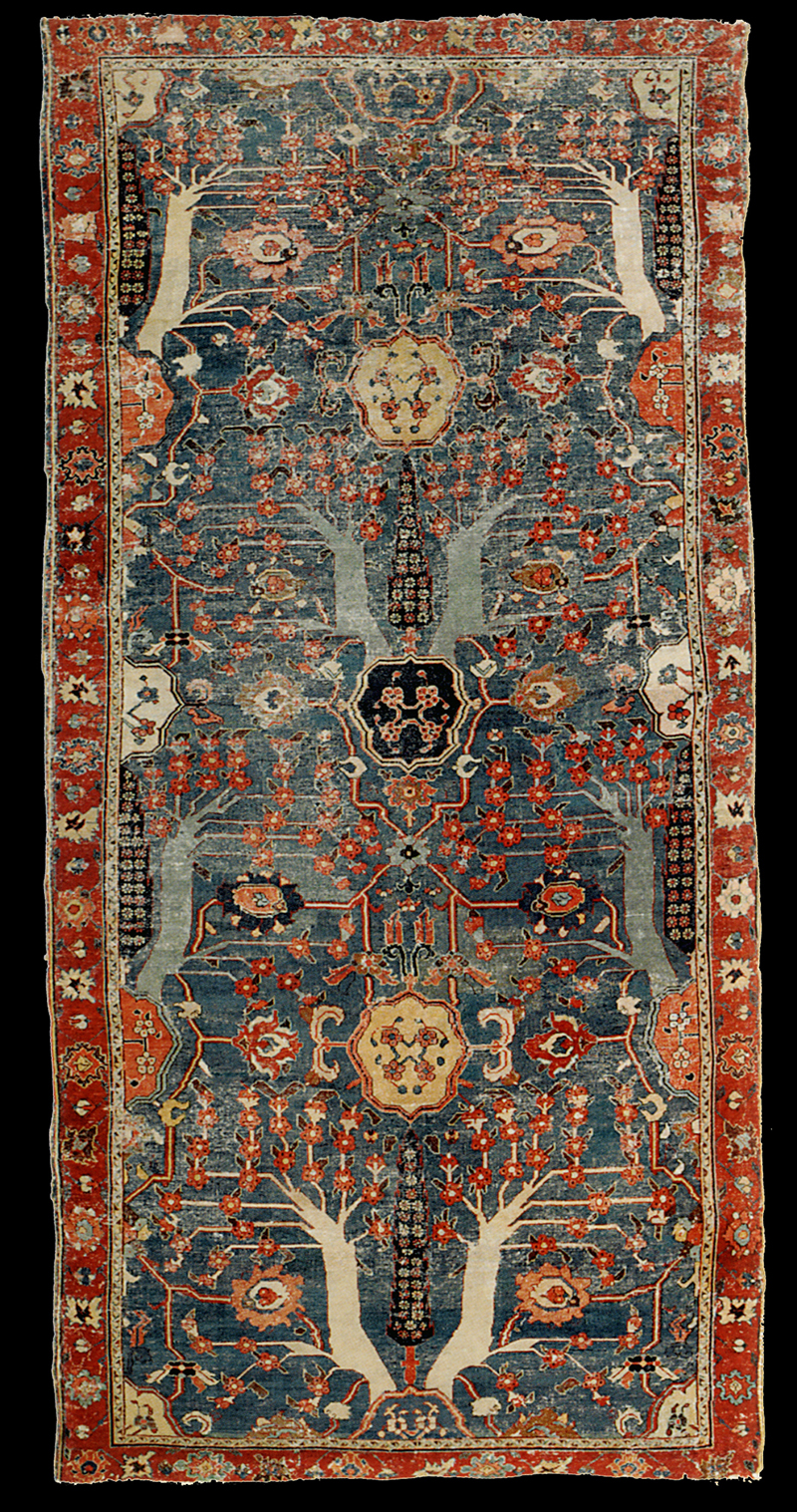|
Early Azerbaijan
Tree rug, NW Iran, 18th century.
Overall wear, corroded brown, areas of
restoration with scattered repiling and reweaves, selvages replaced, ends
frayed
12ft. x 5ft.9in. (366cm. x 175cm.)
Sotheby's 10 October
2008, lot 41
US$40,000-59,000
€25,000-37,000
This kelleh belongs to a group of carpets which are
often attributed to either North West Persia or the Azerbaijan region of
the Caucasus. An extremely similar example is discussed by Ulrich
Schurmann, (Schurmann, Caucasian Rugs, Munich, 1961, pp.58-59, pl.2).
Although the colouring is very similar in both rugs, the drawing of the
flowering trees in the field of that rug is evidently more slender and
elegant than the thick-set nature of those in the present lot. At first
glance both rugs appear to have been woven in the same border region of
North West Persia if it were not for the inclusion of the lyre motif in
the border of the Schurmann example, which is characteristically of
Caucasian origin (see Schurmann, op cit., p.67, pl.6).
Another
related example attributed to Azerbaijan is discussed by Eberhart
Herrmann, (Asiatische Teppich- Und Textilkunst, 3, Munich 1991, pp.50-51,
pl-21). The same carpet was previously sold by Sotheby's New York, 9 June
1990, lot 79, as 'Caucasian/Northwest Persian1. The drawing has become
increasingly angular, however the design still features two vertically
oriented palmettes flanking two horizontal palmettes surrounded by dense
leafy, flowering trees.
|

